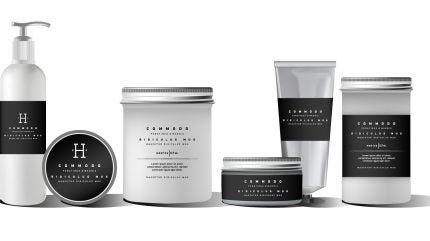
Sleek, practical, and surprisingly adaptable, tube packaging has evolved into one of the most popular choices for brands seeking user-friendly, protective, and sustainable options.
From cosmetics and pharmaceuticals to food and industrial products, this cylindrical marvel offers unique benefits that keep it relevant in today’s ever-changing market.

Discover B2B Marketing That Performs
Combine business intelligence and editorial excellence to reach engaged professionals across 36 leading media platforms.
As environmental concerns and consumer preferences shift, the tube’s role in packaging strategies is becoming even more prominent.
The appeal of tube packaging for diverse industries
At its core, tube packaging—encompassing squeeze tubes, laminated tubes, aluminium tubes, and plastic tubes—delivers convenience, precision dispensing, and product protection.
Its compact, portable form makes it especially suitable for items that require frequent use or travel-friendly formats. Beauty and personal care brands have long embraced tubes for creams, gels, and lotions because they minimise contamination by preventing repeated exposure of the contents to air and fingers.
In the pharmaceutical sector, tubes safeguard ointments and medicated creams by providing an airtight barrier that extends shelf life.

US Tariffs are shifting - will you react or anticipate?
Don’t let policy changes catch you off guard. Stay proactive with real-time data and expert analysis.
By GlobalDataMeanwhile, food manufacturers use food-grade tubes for sauces, condiments, and purees, offering consumers easy portion control while reducing waste.
Even industrial products such as adhesives, lubricants, and sealants benefit from tube packaging’s controlled application and reliable sealing, preventing spillage and improving user safety.
Sustainability driving tube packaging innovation
Sustainability has become a defining factor in packaging decisions, and tube packaging is undergoing a significant transformation to meet these expectations.
Brands are exploring eco-friendly tubes made from biodegradable materials, recyclable plastics, and aluminium—one of the most recycled materials worldwide.
Lightweight tubes help reduce transport emissions, and many manufacturers are shifting to mono-material tube designs to simplify recycling.
For example, cosmetic companies are launching tubes crafted entirely from recycled plastic (PCR) or bio-based resins derived from renewable sources like sugarcane. These innovations align with consumers’ growing demand for sustainable packaging, positioning tubes as a key component of brands’ circular economy strategies.
Brands adopting such solutions can communicate their environmental commitments while satisfying regulatory and retailer requirements for greener packaging.
Another trend reshaping tube packaging is refillable tube systems, where durable outer casings house replaceable inner tubes. This approach reduces overall material usage and encourages repeat purchases, offering economic and environmental benefits.
As companies continue to innovate, tubes are likely to become even more integral to sustainable packaging ecosystems.
Design flexibility and branding opportunities
Beyond functionality, tube packaging excels at providing a flexible canvas for eye-catching design and brand differentiation.
Modern printing technologies, including digital and flexographic printing, allow brands to achieve high-resolution graphics, metallic effects, and tactile finishes that engage consumers at the point of sale.
Tubes can be produced in various shapes and diameters, offering a wide range of creative possibilities for brands to express identity and enhance shelf appeal.
With the rise of direct-to-consumer e-commerce, packaging must now do double duty—attracting attention online and ensuring safe delivery.
Tubes excel on both fronts: their distinctive form stands out in social media and online listings, while their durable, squeezable construction protects contents during shipping.
Brands are leveraging this advantage to create unboxing experiences that strengthen customer loyalty and encourage repeat orders.
Personalisation is also gaining ground, with limited-edition tubes, seasonal designs, and region-specific variations enabling brands to tailor their products for niche markets or special occasions. By using tube packaging creatively, companies can reinforce their messaging and forge deeper connections with consumers.
Looking ahead
As industries face mounting pressure to deliver convenient, sustainable, and visually appealing packaging, tubes have emerged as a timeless, adaptable solution.
Combining user-friendly functionality with innovative materials and striking design potential, tube packaging is well-positioned to meet the demands of modern consumers and regulators alike.
By embracing sustainable options and creative branding, brands can harness tube packaging’s unique advantages to build trust, stand out on crowded shelves, and reduce their environmental footprint—securing its enduring place in the packaging landscape.





